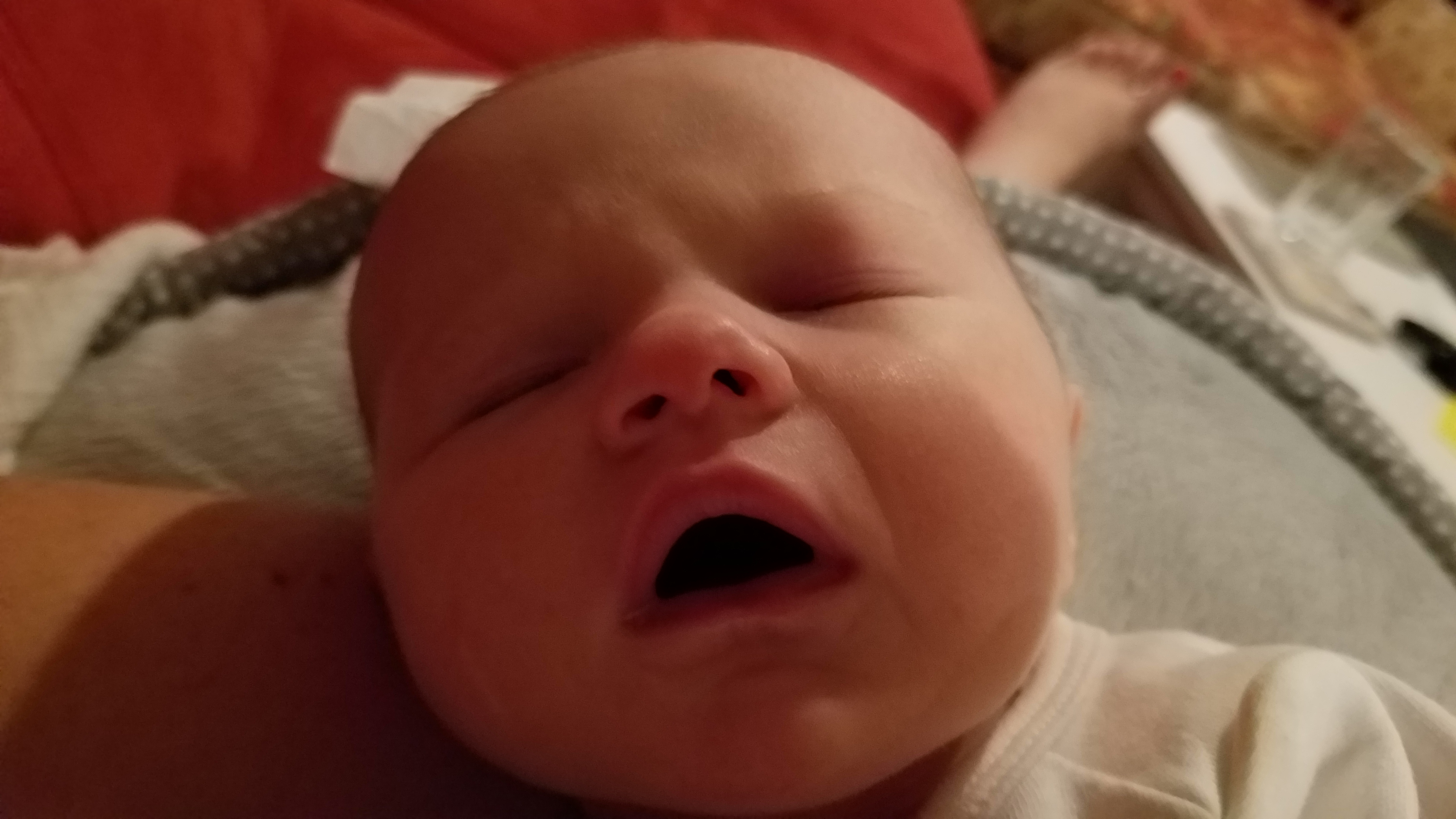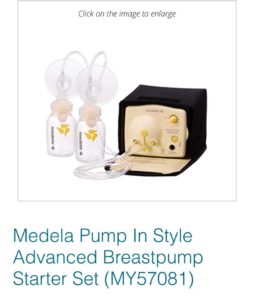
The Silicon Savior
I had given birth in the wee hours of the morning. While I was overjoyed at the birth of my daughter, I was beyond frustrated every time I tried to nurse her. Every nursing session was a teary failure. I’d clumsily try to manipulate myself and latch Charlotte; Charlotte would want nothing to do with me.
When C was born, she would not eat. She. Would. Not. Eat. One lactation consultant (or “LC”) said she was a “lazy latcher.” Another LC said she had a minor posterior tongue tie preventing her from bringing her tongue to the front of her mouth. That, combined with my apparently faulty nipples, did not a successful breastfeeding relationship make.
I underestimated the time I needed to dedicate to feeding my daughter while still in the hospital. Every feeding session was excruciating. I tried to squeeze my nipples into a hamburger shape. Then I tried flipping that hamburger into her mouth, grazing her upper lip (a move called the “flipple”). I also tried the “cigarette” hold (holding my nipple between my index and middle fingers and guiding it into my daughter’s mouth). The result was always the same, a few sucks and little C cried out in hunger again. I cried. My husband cried. I wrote on the hospital tracking form that she had eaten for 20 minutes on each side, knowing that it was more like two active minutes, then 18 minutes of me saying, “I don’t know how to do this.”
C lost weight
C lost weight. I pumped drops of colostrum, then wiped off what I could with my finger and tried to get her to suck it off my fingers.
C lost more weight. After a tearful and rough night, I asked the doctor to order a small amount of formula to take the pressure off me and get more nutrition into her. I fed her 5 mL and tried to nurse her again. Still unable to get C to latch, I asked the nurse to help. Instead, the nurse grabbed the bottle and proceeded to try and pour another 15 mL of formula down her throat. I lost it. I was somewhere between screaming and sobbing, demanding the nurse put down my daughter and the bottle. My husband, seeing my somewhat uncharacteristic outburst, leapt to his feet and demanded the same and then started crying himself. As the nurse protested, saying the doctor had ordered formula, I sobbed and screamed to my husband to explain to her that I had requested the formula. Angry and upset, the nurse retreated. C cried in hunger.
C lost more weight. My first night home from the hospital was a disaster. Our home was full of parents, step-parents and in-laws and I still couldn’t get my daughter to eat. I felt the pressure to be social, all the while knowing that I should be doing nothing but feeding my daughter. At only a few days old, the constant struggle to get her to eat was weighing on me. In a few months, I would grow comfortable lifting my shirt and feeding C anywhere, any time, but in those early days I was still modest and demurred. I isolated myself in another room and spent hours trying to get her to eat. When she wasn’t actively eating, I covered us with a blanket and enjoyed skin-to-skin contact.
At this point, I started to hear, “You can always use formula.” Yes, I could have. But I wanted to breastfeed and what I needed was support, not a reason to quit. Now, I realize that a lot of our problems are par for the course. Not every baby is as difficult to latch, but many are and others are worse. Every baby has his or her own difficulties. But I wasn’t prepared for the difficulty I would have with simply latching her.
“Whatever happens, don’t look at me.”
At some point during my first night home, out of desperation, I told my husband he needed to get my breast pump set up. Ordered from a medical supplier through my insurance months earlier, it was a barebones kit with brief directions. I had opened the box once and was so overwhelmed with

the mess of tubes and strange-looking parts that I had closed it up and put it in a closet, convinced I wouldn’t need it for months. I tended to Charlotte as my husband washed parts and watched YouTube videos to try and set up the pump. Then, in a relationship-defining moment, my husband said, “Whatever happens, don’t look at me.” Of course I had to look: there stood my husband, shirtless in the bathroom, flanges over his own nipples, trying to figure out how the whole contraption worked.
He figured it out and a few minutes later I was awkwardly pumping away. Fearful of nipple confusion and stretching C’s stomach, we used the pumped milk to spoon or cup feed. I wonder now if those fears weren’t overstated. Regardless, at the time I was paralyzed by the idea that I would misstep and ruin our breastfeeding relationship. We went to our first pediatrician checkup the next morning and C’s weight had dropped again. I came home and was at my wit’s end.
The bait and switch
I wracked my brain. I thought of everything I had read in the months before C came when I lurked on every Facebook breastfeeding group I could find. I went back over everything I had done with the LC in the hospital. At some point at the hospital, we had tried a nipple shield the LC had given us, but I had dismissed it because it was awkward to use. Desperate for anything to work, I washed it and tried it again…it fell off. I washed it again. I found Kellymom directions on how to use it and tried it again. C was able to latch for a moment, but quickly grew disinterested.
So began the bait and switch. To get Charlotte to eat, my husband would shake a few drops of milk onto the nipple shield and Charlotte’s lip. She’d momentarily rouse herself to suck a few times and release. Jason would again distribute a few drops of milk, Charlotte would again part her lips and eat for a moment before falling off in fatigue. So we would feed her for the 30-40 minutes per side it took her to eat. Each time, she could nurse for a little longer.
The fiesta begins!
Who knew that a little piece of silicone in the shape of a sombrero would save my entire nursing relationship with C? With the help of the nipple shield, C was eating well enough that I was able to use just a few drops of milk to get her started and she could nurse independently. We went through the usual sleepy nursing routine of stripping her naked and using a cold washcloth to keep her awake, but she was eating! Because of her borderline failure to thrive, we had a follow-up doctor’s appointment just a few days later. In those three days, she ate and ate and ate. At that doctor’s appointment, her weight was up for the first time..
The nipple shield was working, but it was daunting. It had to be washed and sterilized after every feeding, but sometimes there was only 20 minutes in between feedings! Uncoordinated and spastic, C would sometimes knock it off before she got latched. So I ordered more, four more to be exact. Working with such a large arsenal, I would always have a spare by my side. If Charlotte knocked one off, I could reach for my backup. All five easily fit in a microwave sterilizer, so it was pretty quick and easy to wash and sterilize them twice a day.
One of the hardest parts of the nipple shield at first was getting it on. Online videos demonstrated pushing the tip down so it would expand and create a slight suction when applied. That was a two-handed application and was nearly impossible to do while holding a hungry baby. Another website recommended applying a small amount of lanolin to help create a suction. I’m here to tell you: a little goes a loooong way. A small amount will help it stick to you and create a seal. A moderate amount will create such a slippery surface that you’ll need to hose down to remove it all. Applying a pea-sized amount of lanolin around the outer ring will help keep it in place, but with time and practice, I was able to go without. Leaving the house in those early days struck fear into my heart. I imagined Charlotte knocking the nipple shield onto a dirty floor and then crying in hunger and frustration when she was unable to latch without it. To alleviate my anxiety, I bought retainer cases and packed three anytime we left the house. In those first weeks, our big adventures out were to the doctor’s office or the lactation consultants- but we were prepared!
Dropping the shield
Some babies cannot transfer milk with nipple shields. Some babies expend so many calories using them, they actually go into a caloric deficit. For both of these reasons, and considering our initial track record, I was anxious to keep close tabs on C’s weight. For the next month, we religiously attended our Tuesday morning lactation support meetings at the local hospital. The weekly weigh-in allowed me to monitor C’s overall weight (she was packing on the pounds by that point and made it back to her birth weight at a little over three weeks) and do weighted feeds to make sure she was gaining enough weight. Essentially, I would weigh C at the beginning of the meeting, feed her as I normally would and then weigh her again to see how many ounces of milk she took in a nursing session. This weekly weigh-in was enough to help me keep my sanity in the early months. When she was fussy during and after nursing sessions, I knew she was getting plenty.
The LC had originally recommended that I always introduce my nipple without the shield first, but C wasn’t having any of that, and I gave up pretty quickly. Around three weeks, under the direction of our lactation consultant, I started removing the nipple shield after C nursed on one side and moved to the other side. This strategy worked much better! Partially satiated, C wasn’t as fussy or frantic to eat and would latch on without the shield 30 percent of the time. This continued to increase over the course of a week. After a week of consistently offering my nipple on the second breast, I started taking away the nipple shield on the first side as well. If C fussed, I’d pop it on – a move I had perfected – but that happened less and less often. After another week, C dropped the nipple shield completely.
